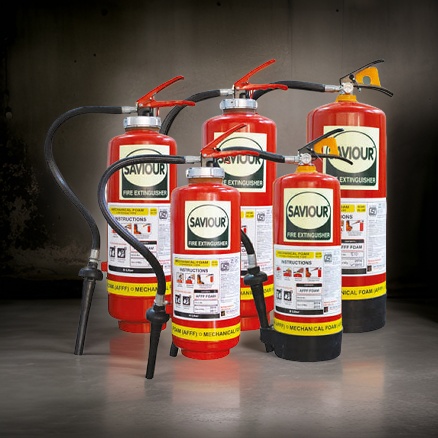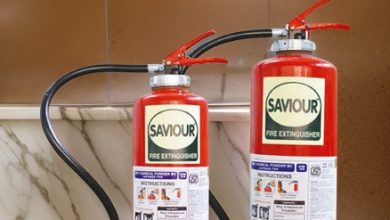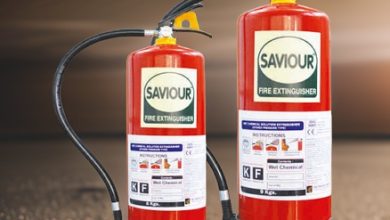A Complete Guide to Fire Fighting Extinguisher Maintenance
fire fighting extinguisher

When it comes to protecting lives and property, having a fire fighting extinguisher is essential—but simply owning one isn’t enough. Regular maintenance ensures your extinguisher works when you need it most. At Sri Triveni Crafts, we emphasize the importance of keeping your fire safety equipment in optimal condition. This guide walks you through everything you need to know about maintaining your fire extinguishers at home or in the workplace.
Why Fire Extinguisher Maintenance is Crucial ?
A neglected extinguisher can become unreliable or even dangerous during an emergency. Over time, parts can deteriorate, pressure levels can drop, and chemicals may lose their effectiveness. Routine maintenance not only ensures proper functionality but also complies with fire extinguisher safety standards and local regulations.
Whether you’re using an ABC fire extinguisher in your home or a modular fire extinguisher in your commercial space, each type requires timely servicing and inspection.
How Often Should You Inspect Fire Extinguishers?
Fire extinguishers should be:
-
Visually inspected monthly
-
Professionally inspected annually
-
Pressure tested every 5 years (hydrostatic testing)
Routine checks should be conducted by responsible individuals in homes and businesses. However, professional servicing by certified technicians, like those at Sri Triveni Crafts, ensures a thorough assessment.
Monthly Fire Extinguisher Maintenance Checklist
1. Check Accessibility
Ensure the extinguisher is mounted in a visible, unobstructed location and is easily reachable in case of emergency.
2. Inspect the Pressure Gauge
Make sure the needle is within the green zone. If it’s too low or too high, the extinguisher may not function properly.
3. Look for Physical Damage
Inspect for signs of rust, dents, cracks, or nozzle blockages. Any physical damage may affect performance.
4. Check the Tamper Seal and Pin
The safety pin should be intact and sealed. If the pin is missing or broken, the extinguisher could have been used or tampered with.
5. Review the Inspection Tag
Make sure the last maintenance date is up to date. If not, schedule a professional service immediately.
Annual Professional Maintenance
Annual servicing includes a more detailed check of the extinguisher’s mechanical parts, refill levels, and performance tests. At Sri Triveni Crafts, a trusted fire extinguisher supplier, our trained technicians perform:
-
Internal inspections (for applicable models)
-
Recharging if contents are low or expired
-
Replacing damaged or worn parts
-
Updating inspection records for compliance
This is especially important for environments with multiple units like offices, warehouses, and industrial setups.
Special Considerations for Different Types
ABC Fire Extinguishers
These versatile units are common in both homes and offices. Ensure the dry chemical powder hasn’t clumped or settled. Shake the canister gently during monthly inspections to keep the powder loose.
Automatic Fire Extinguishers
These should be inspected more frequently in high-heat environments. Regularly check the temperature sensor and ensure that no obstructions interfere with its activation.
Modular Fire Extinguishers
Mounted on ceilings or walls, these require proper alignment and should be tested by professionals to confirm automatic discharge functionality.
Portable Fire Extinguishers
Smaller units are more prone to being moved or damaged. Ensure they are always returned to their designated location after use or inspection.
As one of the leading fire extinguisher dealers and fire extinguisher manufacturer in India, Sri Triveni Crafts offers servicing contracts to help businesses stay compliant and protected year-round.
How to Know When to Replace Your Extinguisher
Fire extinguishers have a shelf life of around 5 to 15 years, depending on the type and manufacturer. You should consider replacing your unit if:
-
The pressure gauge fails consistently
-
The handle is broken or loose
-
The extinguisher has visible corrosion
-
The inspection tag is missing or severely outdated
-
The manufacturer advises disposal after a specific number of years
Tips to Improve Fire Extinguisher Safety
-
Place extinguishers near exits, kitchens, and electrical panels
-
Educate household members or staff on how to operate each type
-
Use labels or signs to indicate extinguisher type and fire class coverage
-
Purchase only certified units from reputable fire extinguisher dealers
-
Maintain a digital log of inspections for easy tracking
Conclusion
Proper maintenance of your fire fighting extinguisher is a vital part of any fire safety strategy. It’s not enough to just install an extinguisher—you must ensure it’s ready to perform in a crisis. From monthly inspections to professional servicing, the care you give your fire extinguisher today can save lives tomorrow. Trust Sri Triveni Crafts to supply, service, and guide you through every aspect of fire safety.
Frequently Asked Questions (FAQs)
1. How long does a fire extinguisher last?
Most fire extinguishers last between 5 and 15 years, depending on usage and maintenance. Check the manufacturer’s label for guidance.
2. Do I need to recharge my extinguisher even if it’s never been used?
Yes, extinguishers should be checked and recharged as part of annual maintenance, especially if pressure levels drop over time.
3. Can I do maintenance myself?
Basic monthly checks can be done by you, but professional inspections are necessary at least once a year for full safety compliance.
4. What is the cost of fire extinguisher maintenance?
Costs vary by type and frequency. At Sri Triveni Crafts, we offer affordable maintenance packages for all extinguisher types.
5. Is it okay to use a portable fire extinguisher for any kind of fire?
No. Always ensure the extinguisher is rated for the fire class you’re dealing with. Using the wrong type can worsen the situation.

